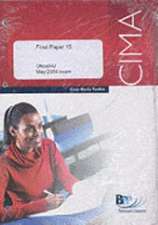Water Quality Hazards and Dispersion of Pollutants
Autor Wlodzimierz Czernuszenko, Pawel Rowinskien Limba Engleză Hardback – 6 apr 2005
| Toate formatele și edițiile | Preț | Express |
|---|---|---|
| Paperback (1) | 943.07 lei 6-8 săpt. | |
| Springer Us – 28 oct 2010 | 943.07 lei 6-8 săpt. | |
| Hardback (1) | 949.23 lei 6-8 săpt. | |
| Springer Us – 6 apr 2005 | 949.23 lei 6-8 săpt. |
Preț: 949.23 lei
Preț vechi: 1157.60 lei
-18% Nou
Puncte Express: 1424
Preț estimativ în valută:
181.63€ • 189.66$ • 149.99£
181.63€ • 189.66$ • 149.99£
Carte tipărită la comandă
Livrare economică 15-29 aprilie
Preluare comenzi: 021 569.72.76
Specificații
ISBN-13: 9780387233215
ISBN-10: 0387233210
Pagini: 250
Ilustrații: XIV, 250 p. 99 illus.
Dimensiuni: 155 x 235 x 16 mm
Greutate: 0.55 kg
Ediția:2005
Editura: Springer Us
Colecția Springer
Locul publicării:New York, NY, United States
ISBN-10: 0387233210
Pagini: 250
Ilustrații: XIV, 250 p. 99 illus.
Dimensiuni: 155 x 235 x 16 mm
Greutate: 0.55 kg
Ediția:2005
Editura: Springer Us
Colecția Springer
Locul publicării:New York, NY, United States
Public țintă
ResearchDescriere
Water resources are under stress worldwide and one of the elements of this stress - man's impact on water quality constitutes a key problem especially in well-developed countries. This problem receives an increasing attention of the public, politicians, decision makers nowadays. People have to answer how to achieve any given level and pattern of water quality in particular watercourses and also how to mitigate the catastrophes that are inseparable elements of civilization. The EU water framework directive, which came into force at the end of 2000, changes the way of monitoring, assessing and managing water in European countries. Three groups of quality elements (biological, hydromorphological and physico-chemical) have been identified in the water framework directive as necessary to classify the ecological status of a particular water body. There are however many significant shortfalls and gaps not only in the countries information but also at the basic understanding of the physical processes occurring in various water bodies and the presented volume aims at filling some of those gaps. One should also mention about other EU directives, like the dangerous substances directive, drinking water directive, IPCC directive which in general should lead towards reduction and elimination of pollution by hazardous substances, phasing out emissions, losses and discharges of them. In general achievement of levels protecting human health and aquatic ecosystems is expected.
Cuprins
Mixing Models for Water Quality Management in Rivers: Continuous and Instantaneous Pollutant Releases.- Three-Dimensional Model of Flow and Mixing Processes in Open Channels.- Horizontal Mixing in Shallow Flows.- On the Theoretical Prediction of Longitudinal Dispersion Coefficients in a Compound Channel.- Application of a Transient Storage Model to Meandering Channel Studies of Solute Transport and Dispersion.- Experimental Study of Travel Times in a Small Stream.- Migration of Floating Particles in a Compound Channel.- Persistence of Skewness of Concentration Distribution.- Moments and Analytical Solution of Coupled Equation Describing Transport of Pollutants in Rivers.- Influence of Hyporheic Exchange on Solute Transport in a Highly Hydropower Regulated River.- Models of Hyporheic Contamination by Non Reactive Solutes, Metals and Colloids.- The Flow in Groyne Fields.
Caracteristici
Fills the need for fundamental research on the actual impact of pollutants on water quality with a focus on the catastrophic releases of pollutants into water supplies
























